Gerbera is a herbaceous plant belonging to the Astrov family. It came to room collections from distant tropics. A beautiful legend is associated with the origin of this flower. It speaks of a girl whose beauty was admired not only by people, but also by animals and birds. An envious witch wanted to spoil the girl's appearance, but the gods were ahead of her: they turned the beauty into a gerbera, thereby preserving her beauty.
Contrary to popular belief that the plant is one-year-old, the life and beauty of a flower can be extended to 4 years. To do this, you must follow the rules for caring for the plant and follow the recommendations of specialists. Caring for a room gerbera requires the observance of a period of sleep, so you need to think in advance how to ensure a lower temperature at home and, if necessary, additional illumination.
Content
Characteristics of the species and indoor varieties of gerbera
From the garden gerbera, its indoor variety differs in growth and size of leaves. Indoor flower reaches 30 cm in height and is considered a dwarf variety of plants. The leaves of indoor gerberas are an order of magnitude smaller than the leaves of their garden sisters. But their flowers are the same - up to 15 cm in diameter. Thanks to this, indoor views look much more spectacular than garden gerberas.
Cirrus dissected leaves, collected basal rosette. The flower-bearing arrow is thick, leafless. Depending on the variety, the flowers can be simple and double, with wide or narrow, pointed or round petals. The color of the flowers is diverse. It can be both monophonic and two-tone.
Photos of gerberas are often found in catalogs of wedding salons. Flowers are especially popular in this area. Due to the ability to maintain freshness for a long time, they are actively used to design both bouquets of brides and the entire celebration.
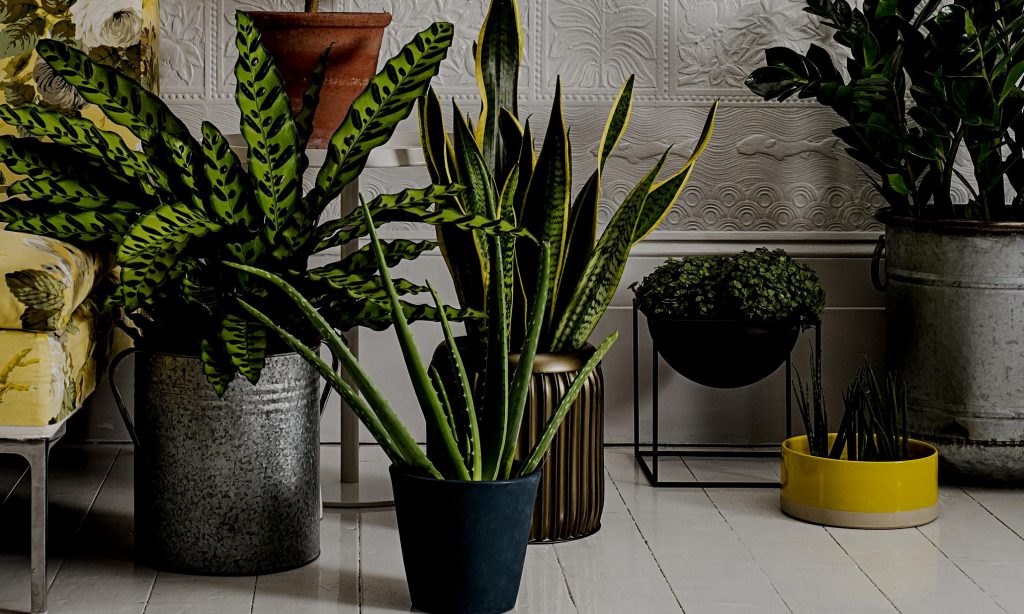 You may be interested in:
You may be interested in:There are several classifications of gerberas. One of the most popular is the classification by the color of the petals. According to her, these types of gerberas are distinguished:
- Pink and purple.
- Orange
- Reds.
- White and cream.
The following varieties are considered the most common representatives of pink and purple hybrids:
- Sweet Surprise.
- Jasmina
- Pam.
Among orange varieties, such hybrids are very popular:
- Sweet Caroline.
- Orangina.
- Sweet Honey
The most popular red gerberas are representatives of such varieties:
- Sweet glow
- Sophie
- Rachel
Among the white and cream hybrids, the following varieties should be distinguished:
- Sylvana.
- Valerie.
- Catherine.
All house hybrids were bred from Jameson's gerbera. In some flower shops you can find bright blue or blue gerberas. In nature, such colors do not exist. In fact, these are flowers with colored petals.
Potted Gerbera Care at Home
Growing a gerbera in a pot does not require special experience and equipment; requirements for conditions are traditional for heat-loving plants. The only difficulty is the observance of two care regimes - the period of active growth and the period of sleep.
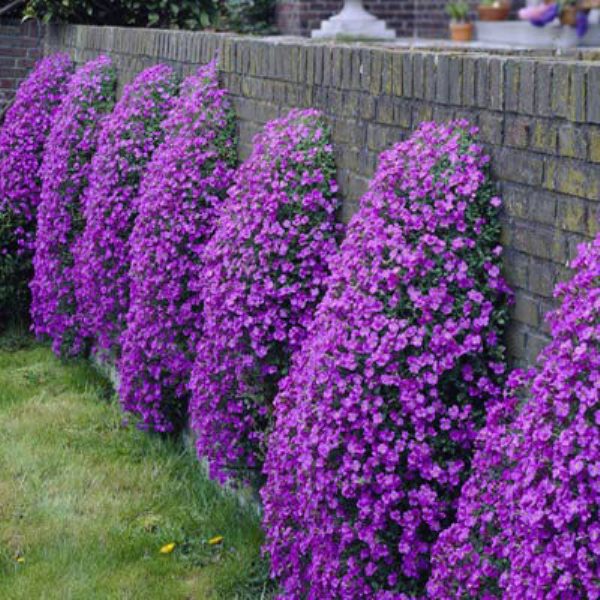 You may be interested in:
You may be interested in:Lighting
Gerbera loves a lot of light and tolerates even a small amount of direct sunlight. It is useful to soak up the flower under the rays of the morning and afternoon sun.
Gerbera is best placed on the windowsill. Only there she will receive the proper amount of light. It is advisable that this be a place with windows facing west or east. On the south window, the flower will have to be hidden under the curtain at noon. The northern windowsill is not suitable for growing flowers due to lack of light - this arrangement will require the installation of additional artificial lighting.
Temperature and humidity
In the period of active growth, the gerbera is comfortable at a temperature of +18 ℃ to +20 ℃. To create such conditions is rather difficult, especially during the heat. The plant can be placed in an air-conditioned room, but in such a way that the flow of cold air is not directed to the flower pot.
The plant grew in conditions of high humidity, respectively, it must be systematically sprayed. But some gardeners believe that such a procedure negatively affects the condition of the leaves.
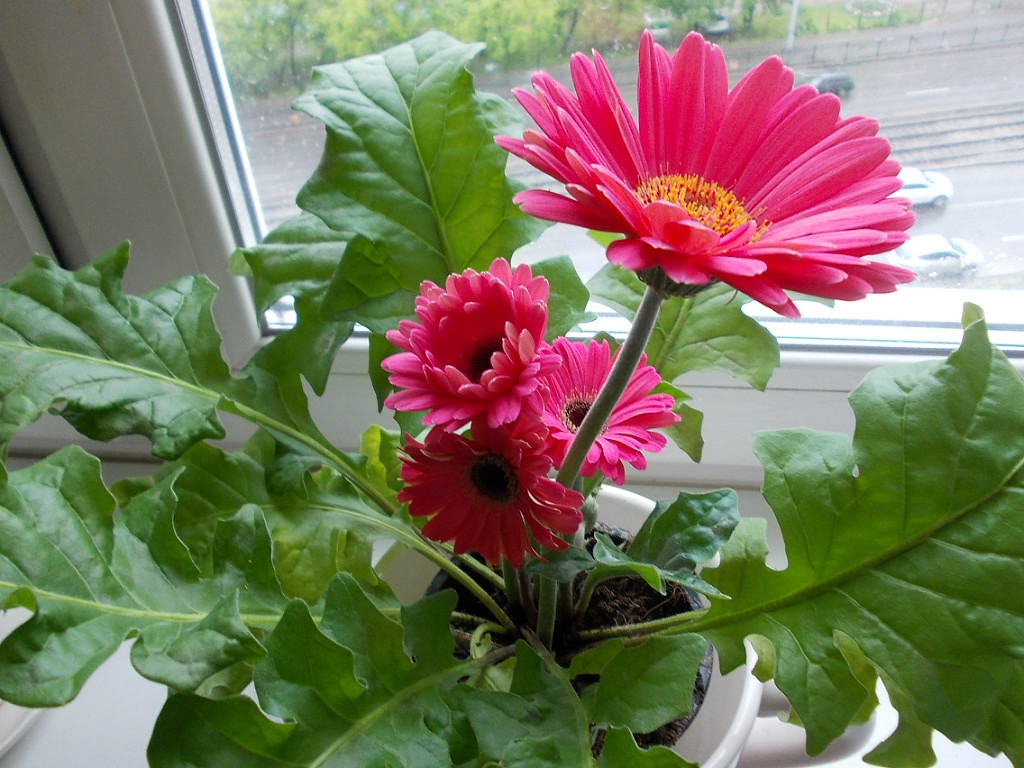
To increase air humidity, while not spoiling the decorative flower, you should adhere to such recommendations when spraying:
- use a finely divided spray gun;
- spray with soft water at room temperature;
- spray water not so much on the leaves as on the air around the flower.
Spraying is carried out only during the growing season.
Watering and feeding
In floriculture, there is an unwritten rule, the essence of which boils down to the fact that gerberas are better to overdry than to waterlog. From excess moisture, rot begins to develop. Therefore, during the growing season, watering is carried out every 3-4 days.
Water the flower should be through the pan. Some time after moisturizing, unused water must be drained from it. Water for irrigation should be soft, and its temperature should correspond to the temperature of the room in which the plant is contained. Running water is pre-filtered and sedimented for at least 24 hours.
Flower feeding is carried out every 2 weeks from March to August. By the fall, procedures are cut down to 1 time per month. Complex mineral fertilizers for flowering indoor plants are used as nutrition. The complex is administered during watering. It is advisable to use liquid forms. Gerbera does not tolerate manure. Therefore, it is better to refuse organic fertilizers.
Flowering Care
The bulk of indoor gerberas blooms in the fall, less often in the spring, and some varieties can bloom twice a year. In conditions favorable for the plant, the flowering period can be up to 6 weeks. As soon as buds begin to form in the gerbera, caring for it changes slightly. Watering is quicker, moistening the soil every 2 days.
During flowering, it is important to adhere to all recommendations for plant care. During this period, the flower can not be disturbed: transplant, crop, move to a new place.To preserve the buds, it is necessary to monitor the temperature in the room: the difference between day and night temperatures should not exceed 5 degrees.
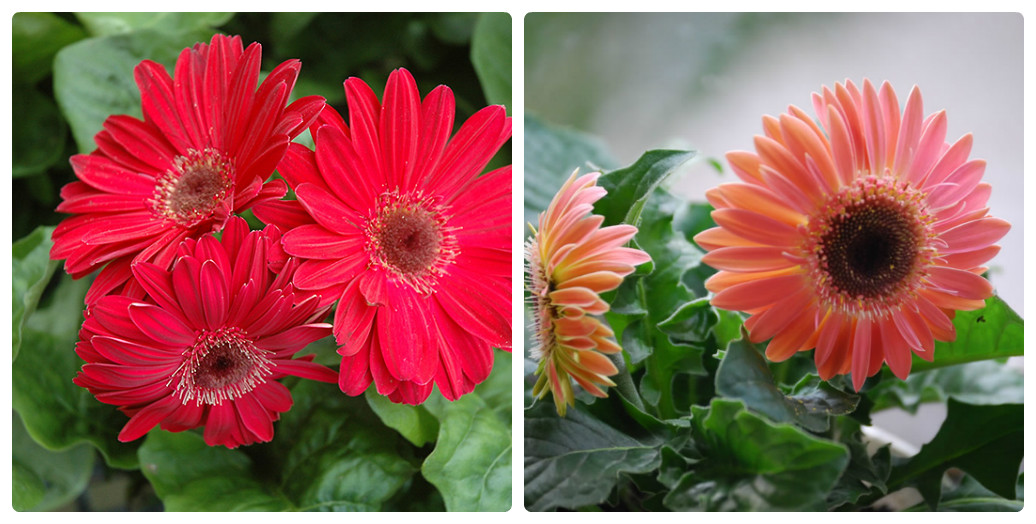
Trimming, nipping and preparing for winter
After flowering, sanitary pruning is performed. It involves the removal of all wilted inflorescences. As necessary, dried leaves are cut from the flower. Gerbera formation is not required - it grows in a neat compact bush. Some gardeners stimulate the formation of new buds by pinching. To do this, they cut off excess leaves from the plant.
From mid-autumn, the flower begins a dormant period, which lasts all winter. Care during stagnation differs from basic care in such aspects:
- reduction of watering up to 1 time per week;
- cancel feeding;
- cancel spraying;
- temperature mode 12-14 ℃;
- illumination by fitolamps as needed.
Diseases and pests of room gerbera
Indoor gerbera is very susceptible to infectious diseases and pests. Often the cause of a plant's malaise is the mistakes made when caring for the flower.
Mistakes in leaving
Gerbera can weaken and become ill from improperly organized care. The most common are the errors described in the table. Timely elimination of the causes will return the flower to its usual state.
| Symptoms | Causes |
|---|---|
| Yellowing leaves | Improperly organized watering. |
| Drooping leaves | Low air humidity. |
| Pale petals and small leaves | Not bright enough. |
| Drying leaves | Unsuitable substrate or nutrient deficiency. |
| Dry beige spots on the leaves | Burns due to prolonged exposure to direct sunlight. |
| Lack of flowering | Unsuitable pot, excess nitrogen in the soil or too long daylight hours. |
| Black and mucous base of the stem | The development of root rot due to waterlogging of the soil. |
Infectious diseases
Most often, the flower is affected by such diseases:
- Powdery Mildew It is manifested by the appearance of a white powdery coating on the leaves. Over time, the plaque structure becomes denser and changes color from white to brown.
- Gray rot. The symptoms of rot are wet dark spots on the leaves and stems. Over time, these spots are covered with a gray fluffy coating. From the pot comes a sharp smell of rot.
- Late blight. It affects both the roots and ground organs of the flower. The plant easily “pops out” of the pot, and small brown spots appear on the leaves and stems, which gradually increase in size and acquire a purple hue. Affected organs are deformed and rot.
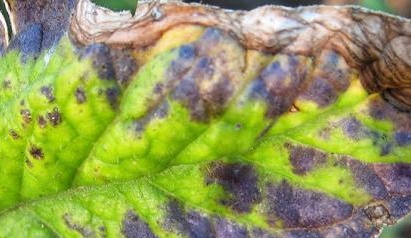
Late blight - Fusarium Manifested by the drying of stems and leaves. On the cut you can see a black ring. A pinkish mildew appears on the roots.
All of the above diseases are very dangerous for a houseplant. In the early stages, the flower is freed from the parts affected by the disease, treated with fungicide and transplanted into new soil. The pot is subject to sterilization.
Pests
Gerbera can be the victim of the following pests:
- Shield. At an early stage, infection can be determined by brown waxy spots on the back of the leaf. Later, unaesthetic beige-brown spots appear on the entire surface of the leaves and stems, gradually increasing in volume. Around the spots appear reddish stains.
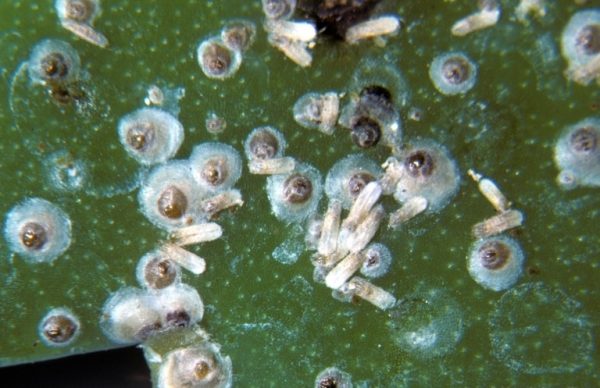
Shield - Aphid. You can determine the infection with this pest by sticky coating on the leaves. Over time, all terrestrial parts of the plant are covered with small moving points of beige color - aphids. The affected parts of the flower are deformed and dry out.
- Spider mite. It is impossible to notice this pest with the naked eye.The tick is determined by the thin threads of its web and yellowish spots on the affected leaves.
- Whitefly Small white midges stand out well on green leaves. If you do not fight the pest, the sheet plates will become transparent and will soon die.
It is necessary to deal with harmful insects with the help of special preparations: insecticides will destroy insecticides, aphids, aphids and whiteflies, and acaricides will be effective against spider mites.
Flower propagation methods
At home, a gerbera can be propagated by seed, by cuttings or dividing the bush. In practice, the last 2 methods are most often used, since seed propagation is a more complex process and does not guarantee the preservation of varietal characters.
Growing gerbera from seeds at home
The procedure for growing a flower from seeds involves the following actions:
- Seeds are sown in a wet sand-peat mixture.
- Top a little sprinkled with sand.
- The container is covered with glass and placed in a warm, dark place.
- When shoots appear after 10 days, the container is moved to a warm place with bright diffused light.

Gerbera Seed - As soon as the sprouts release 2 real leaves, they are carefully dive into separate containers. Glass is no longer required.
- Seeds are sprayed and aired daily. When 4 leaves bloom on the pickled sprouts, they are transplanted as an adult plant.
Cuttings
Propagation of the flower by cuttings occurs as follows:
- A stalk about 10 cm long is cut obliquely from the mother bush. At least 2 leaves should be on the handle.
- The cutlery is placed in wet sand (perlite, vermiculite) and covered with a transparent cap.

For successful rooting, the room temperature should be around 25 ℃. A high level of humidity should also be maintained. It is advisable to provide a bottom heating cuttings. When the layering takes root, it is transplanted like an adult flower.
Bush division
The easiest way to propagate a plant is to divide the bush. For this, a fragment with two or three growth points is cut from the mother bush using a garden secateurs. Secateurs must be sanitized. Cut points must be treated with an antiseptic. For this, crushed activated or charcoal is suitable.
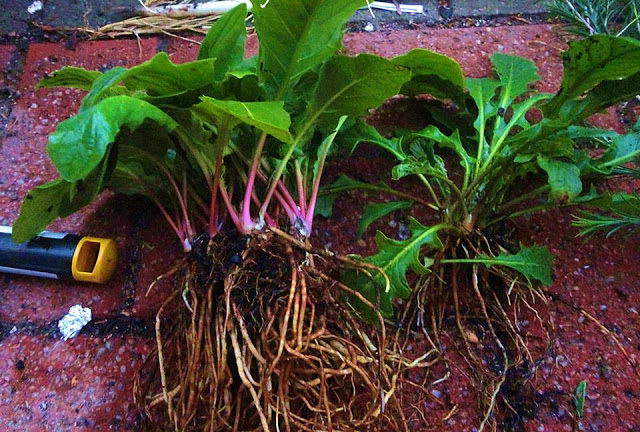
Only adult plants are suitable for division. At least 2 growth buds should also remain on the mother bush. Separated parts are rooted in the usual gerbera soil. They do not require growing or special care. Gerberas obtained by dividing the bush bloom in a year.
 You may be interested in:
You may be interested in:Transfer
The optimal time for transplantation is considered to be the period before and after stagnation. The transplant procedure involves the following actions:
- At the bottom of the flower pot lay a drainage layer of expanded clay or foam.
- A third of the pot is filled with soil consisting of turf land (1/4), coarse sand (1/4) and peat (1/2).
- The flower is placed on the soil with an old land lump.
- The remaining void of the pot is filled with fresh remaining substrate.
- The root neck is left on the soil surface for about 3-4 cm.
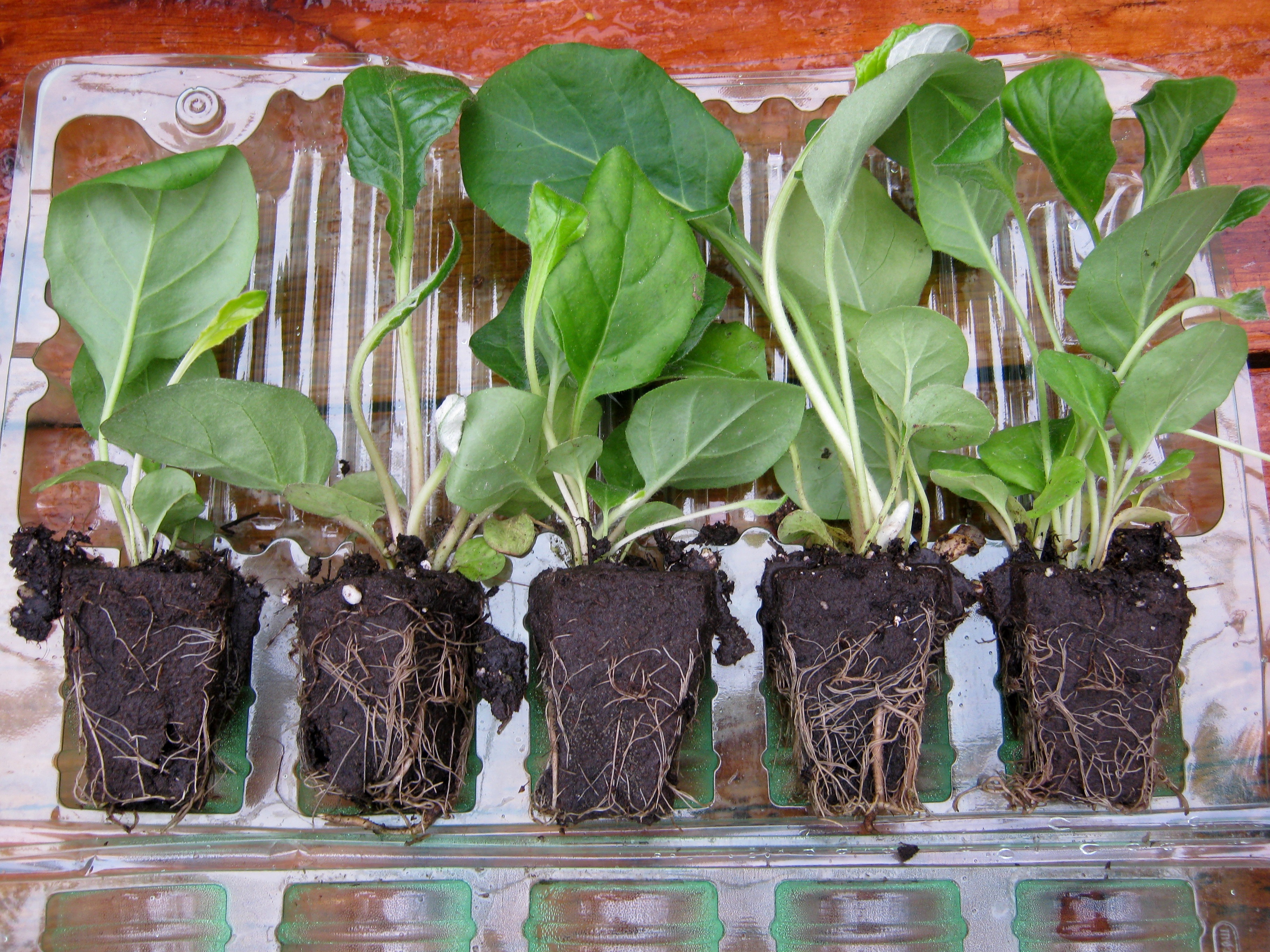
The life expectancy of this plant is 3-4 years. During this time, he is transplanted a maximum of twice: after purchase and a year after the first transplant. After transplanting, it is advisable to put the flower in partial shade for 3-5 days. The first feed is administered no earlier than 3 weeks after transplantation.
Common Growing Questions
Indoor gerbera is a beautifully flowering elegant flower. Through the efforts of breeders, many hybrids of this plant were bred. The flower is unpretentious, but with improper care, diseases that are traditional for home crops may occur.

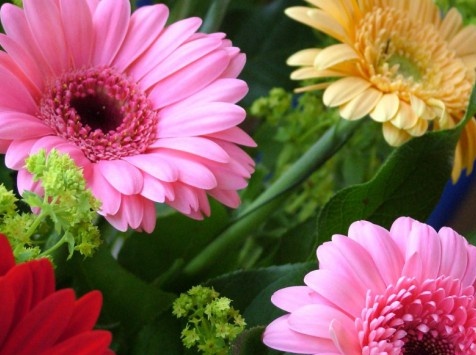
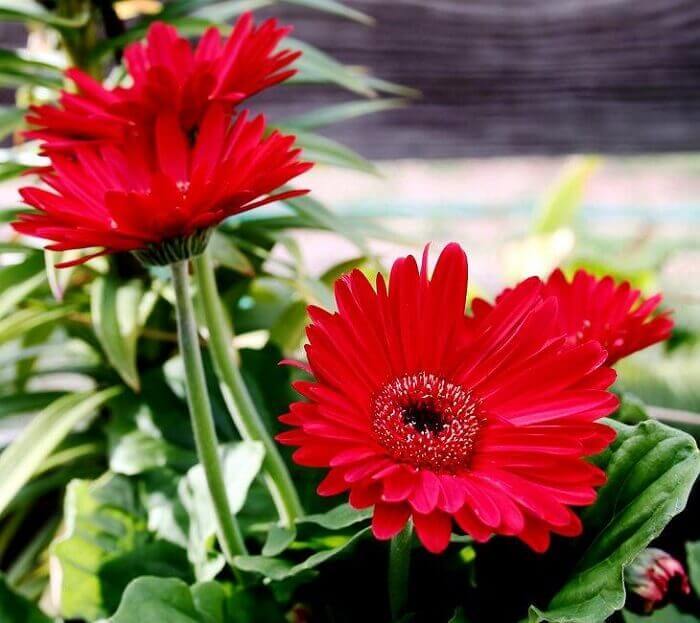
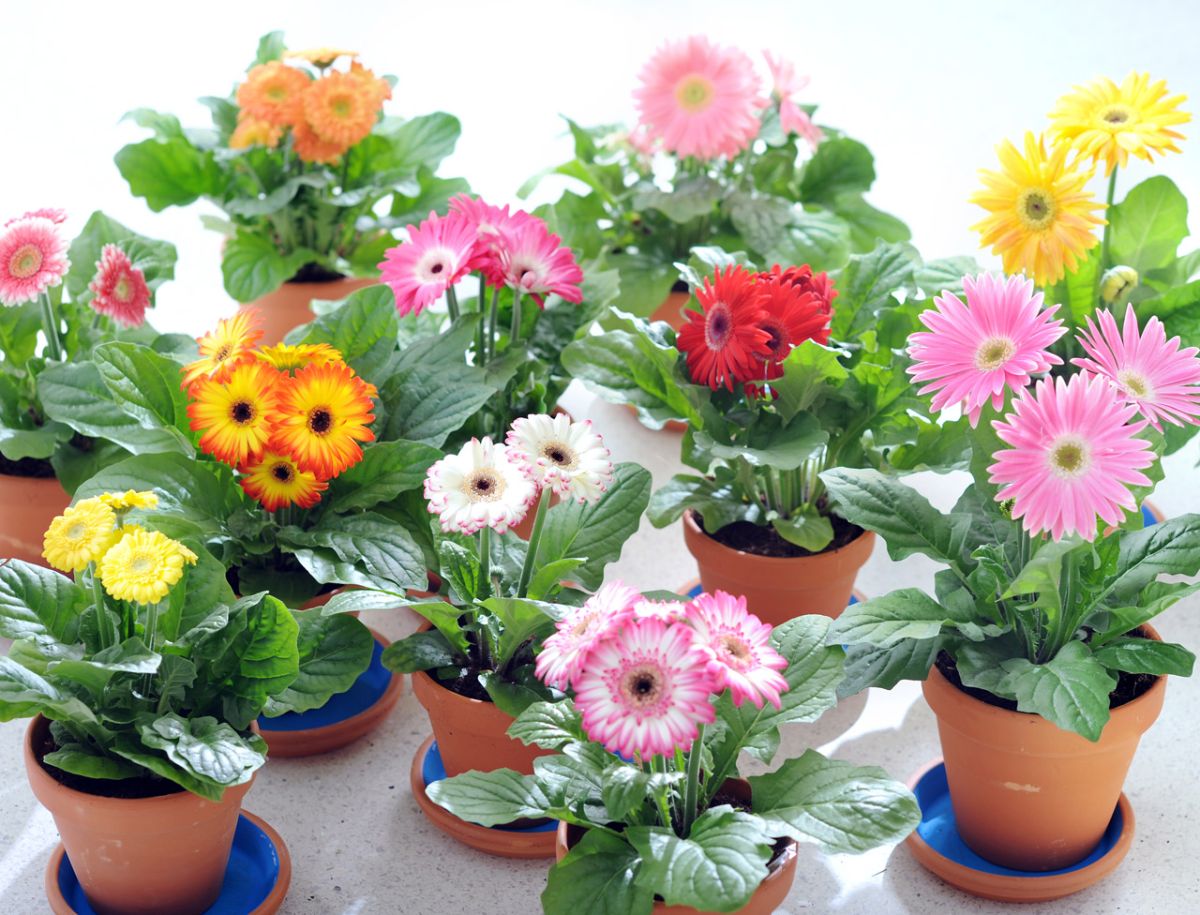
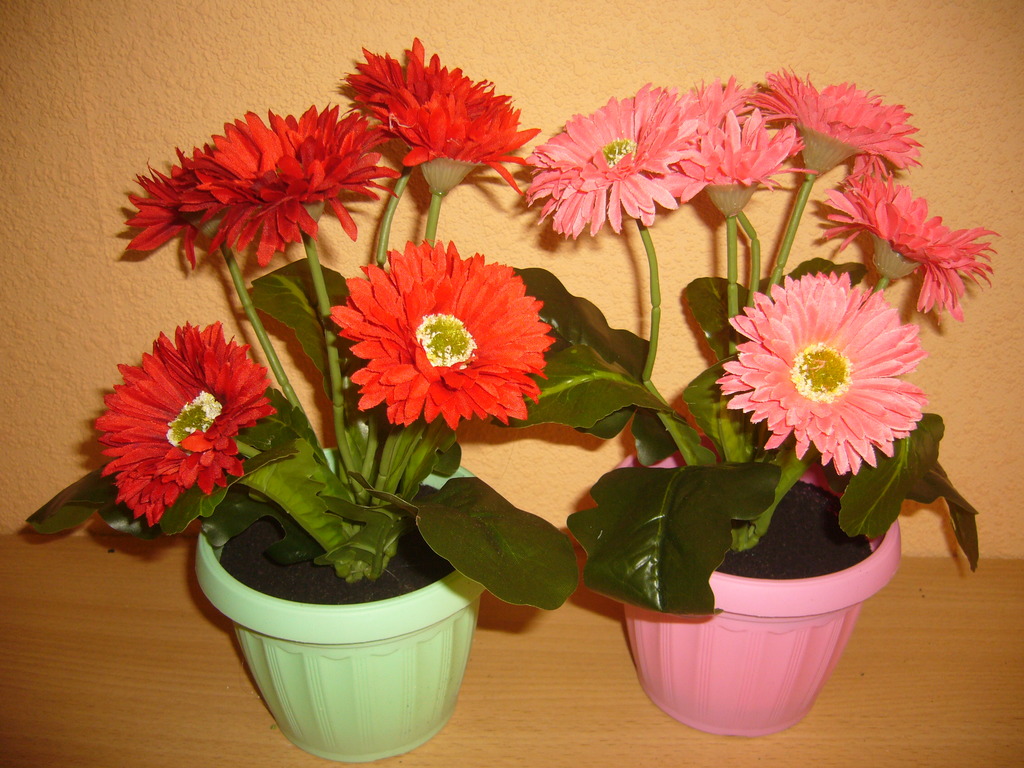
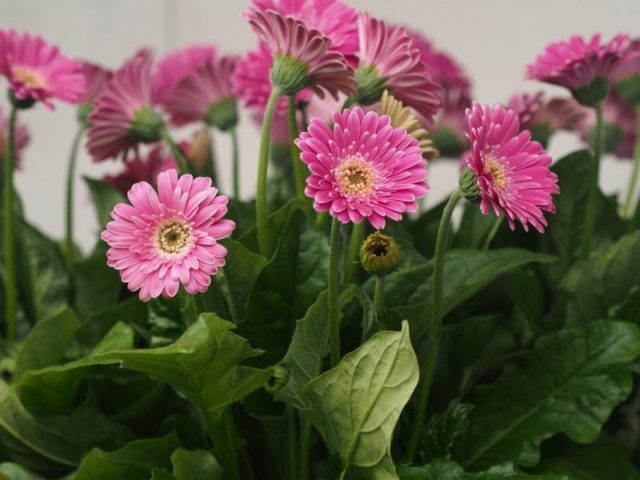
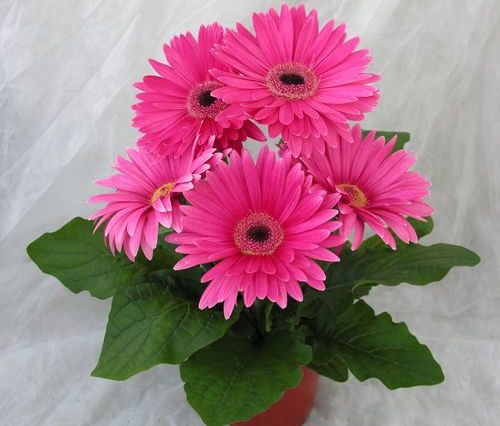
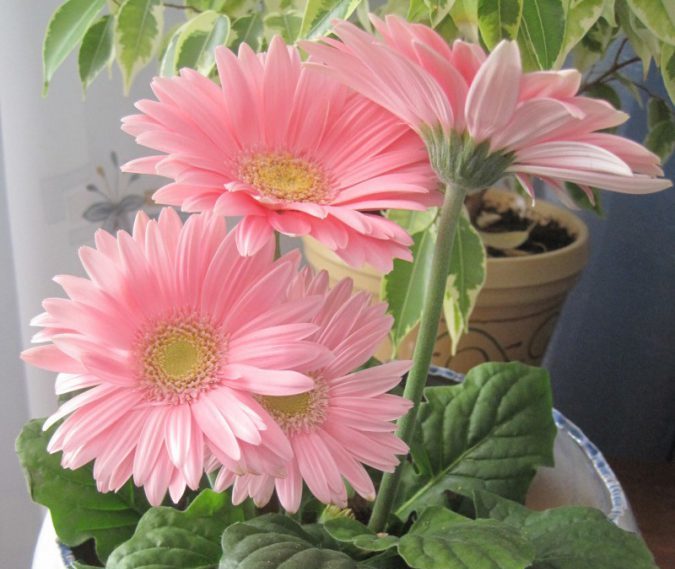
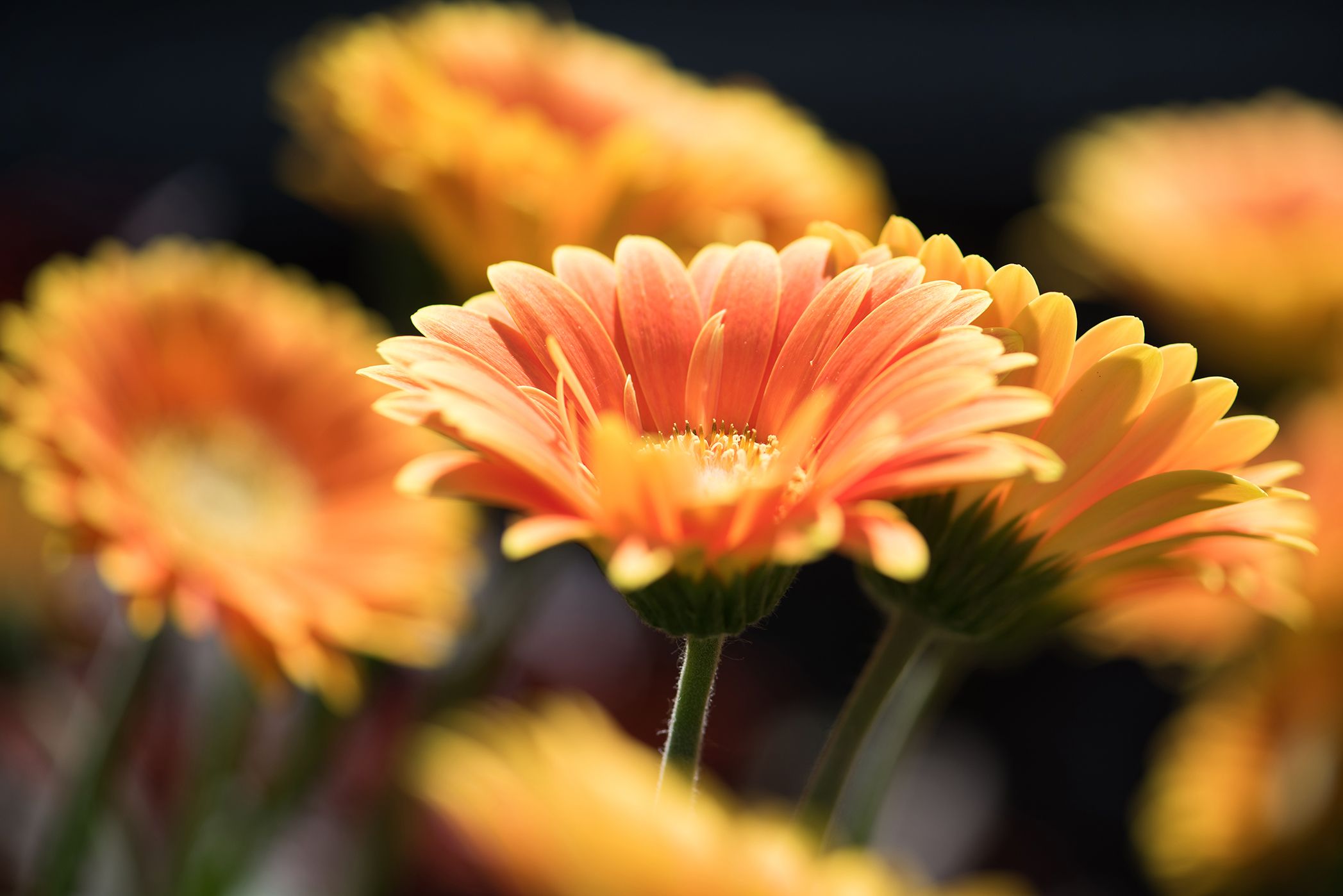
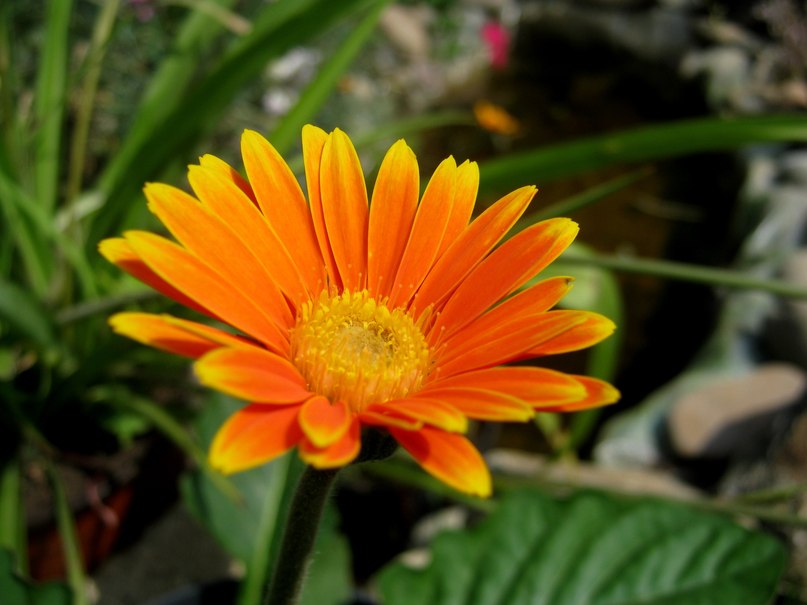
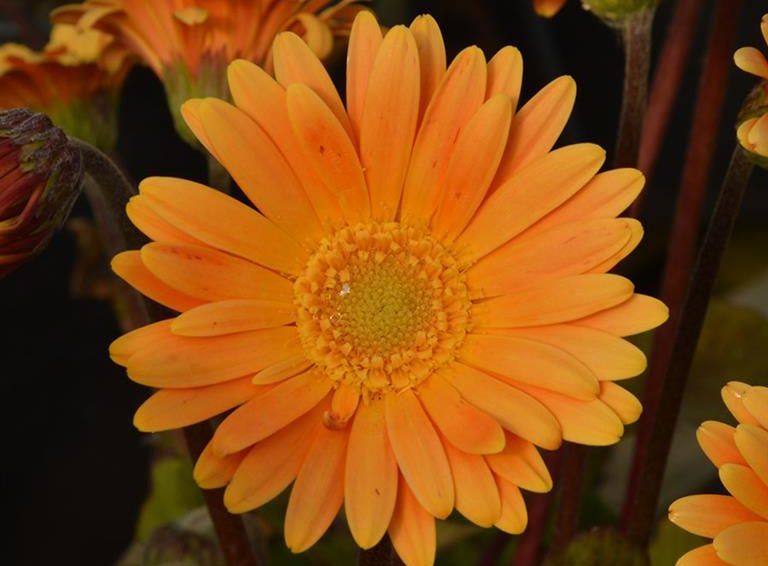
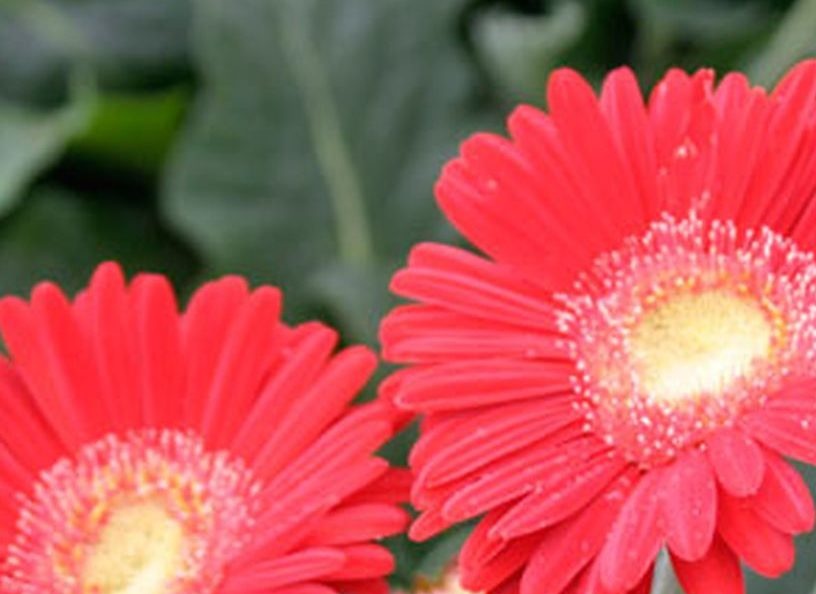
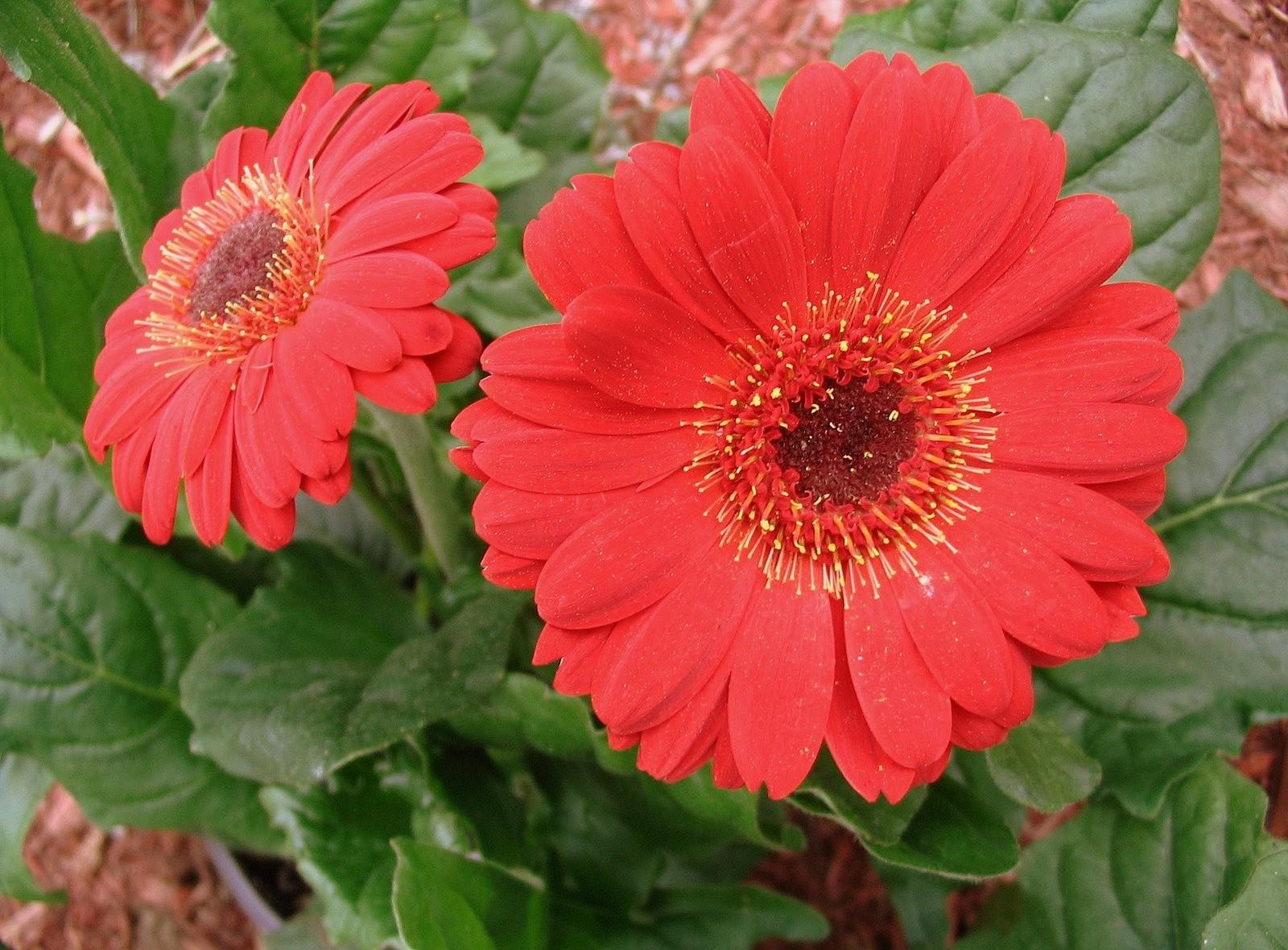
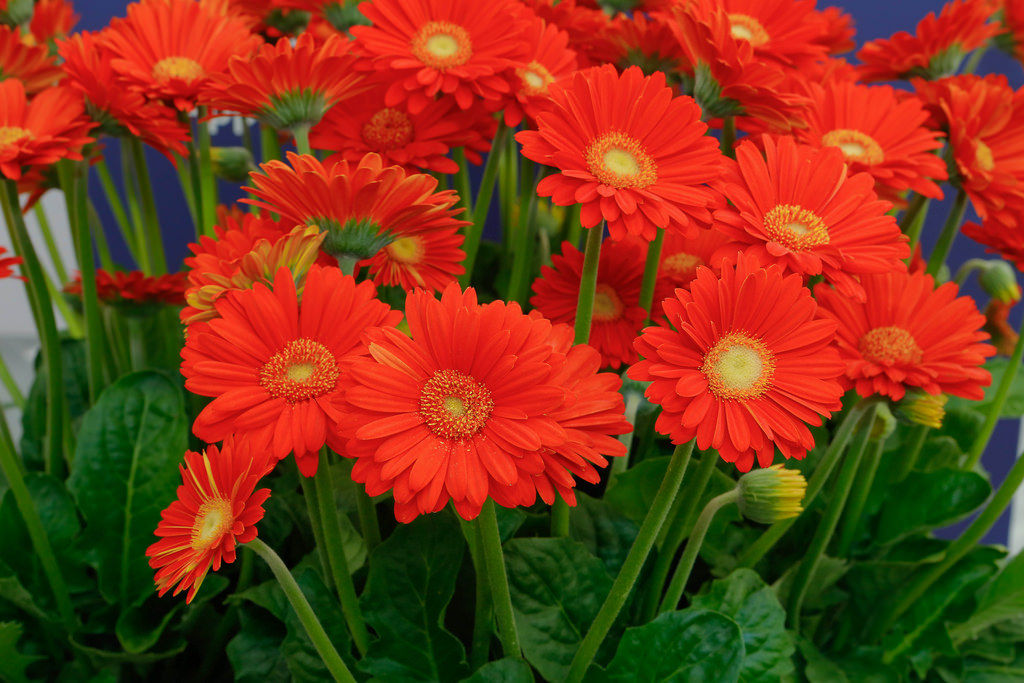
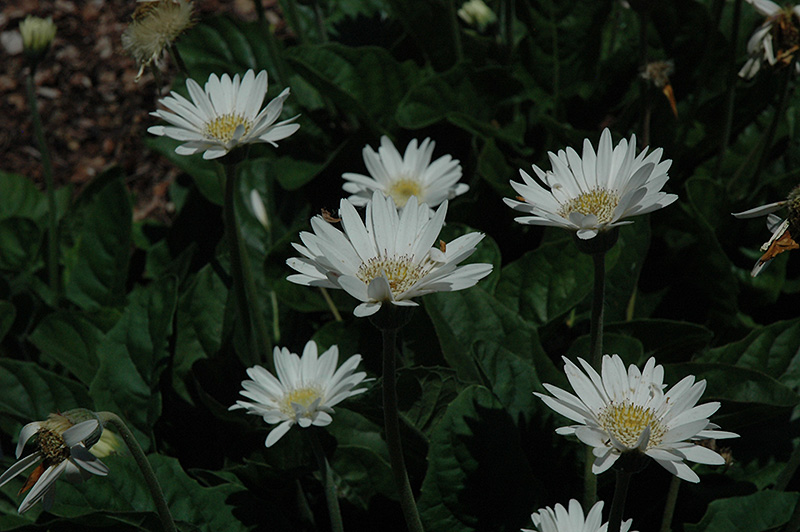
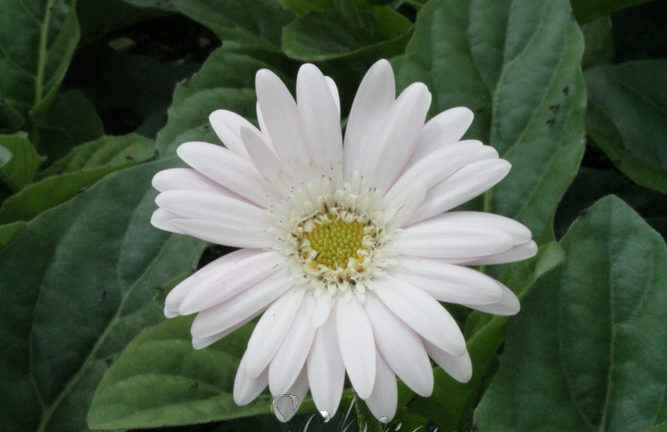
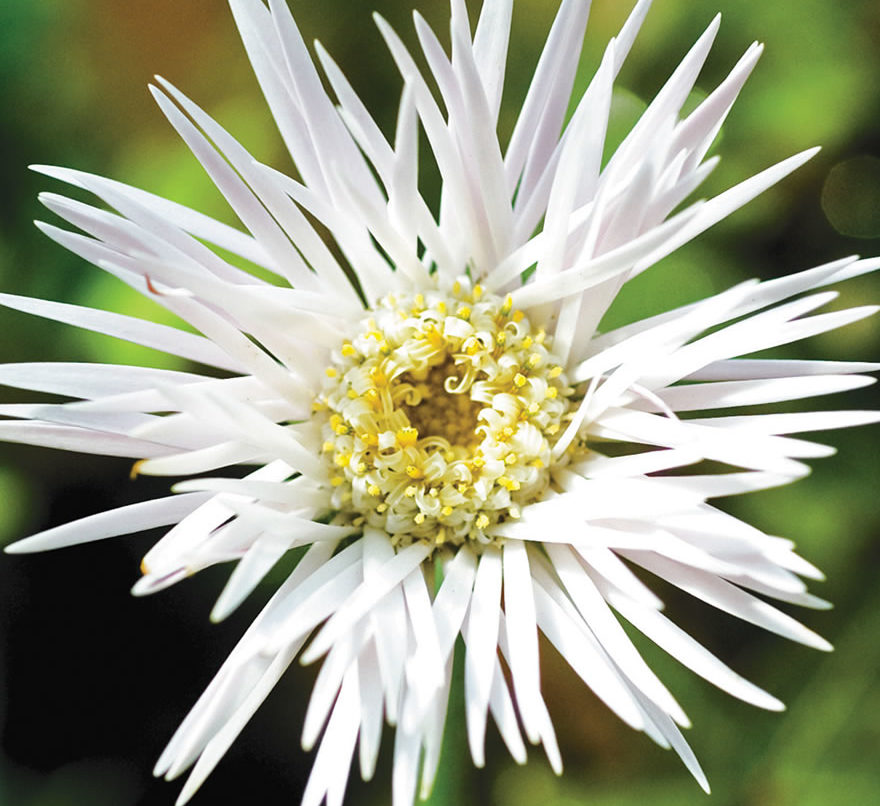



 10 beautiful annuals that bloom all summer
10 beautiful annuals that bloom all summer Sow in the ground, without seedlings: 10 beautiful and unpretentious flowers
Sow in the ground, without seedlings: 10 beautiful and unpretentious flowers Platicodon planting and outdoor care
Platicodon planting and outdoor care Hosta - planting and care in the open ground in the Urals
Hosta - planting and care in the open ground in the Urals